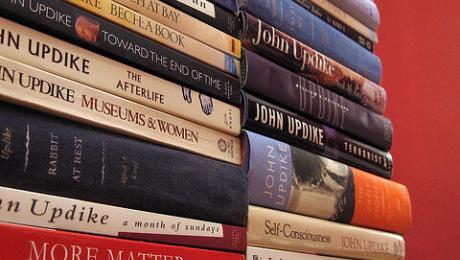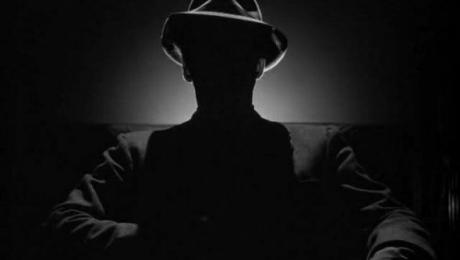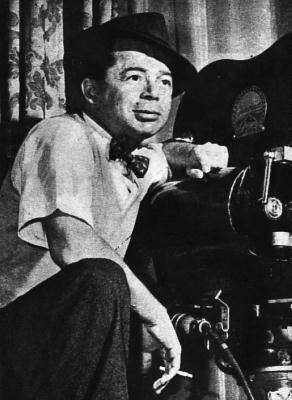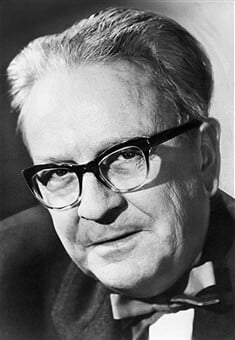Serials and Serialized Fiction—No Longer Fringe Niches of the Publishing Industry
The self-publishing industry and digital media have given new life to serials and serialized fiction. They are no longer “for-free” publications or limited to magazines. A serial is a story written in segments. Daytime soap operas are examples of television serials. Serialized fiction, on the other hand, is a complete story published in segments.
Online Reading, Serials, and Authors’ Intimacy with Readers
In the past, writers like Dickens and Trollope who wrote long books released them as they were writing. George Eliot’s “Middlemarch” was also released this way. Sometimes reader response would make authors modify their work, as happened with Charles Dickens. Dickens altered the end of “Dombey and Son” in response to reader comments.
Serialized fiction made the novels more portable and created a community of readers. Today, digital media is creating a new community of readers as E-readers and mobile devices make fiction portable in the internet age. Successful science-fiction writer John Scalzi began with the serial, “Old Man’s War,” and “50 Shades of Grey” was a serial before it was published traditionally.
E-readers and mobile phones have changed the habits of readers who frequently use these reading sources. Writers have recognized that serials build their readership and allow them more creative freedom than traditional book publishing.
Max Gladstone is among a growing number of writers who have joined today’s serial writing genre. Gladstone is a writer for two fantasy serials. The writer of the “Craft Sequence” series is one of the writers on the Serial Box’s “Bookburners” and “The Witch Who Came in from the Cold” serials.
Capturing Readers with Serialized Fiction
The serialized book publishing method has a proven history of boosting sales and creating anticipation. A French businessman used serialized fiction to create a readership for his daily newspaper in 1836. He serialized Balzac’s novel in segments to hook Parisian readers. That same year serialized fiction began in England with the segmented publication of the “The Pickwick Papers.”
With TV dramas like “Game of Thrones,” House of Cards,” and Downton Abbey,” and serial radio programs hooking their audiences, book publishers would like to boost sales by creating a devoted audience of serialized fiction readers. One of the creative writers taking advantage of digital media is Julian Fellowes, the creator of “Downton Abbey.” Fellowes is publishing his new novel, “Belgravia,” as serialized fiction with weekly chapters released via an app.
Segmented fiction offers writers a new way to reach the reading public. As people spend time waiting, they can be immersed in fiction. Research has also found that people prefer occupied time and complain about unoccupied time. How long will it be before writers can earn income through businesses who want to distract their waiting consumers?
- Published in Writing & Editing Jobs, Writing & Editing Resources
The Distinctions between Mystery and Suspense Novels
In suspense, the readers are waiting for an event to take place. Unlike a mystery, in suspense the readers/observers are informed of what is at stake in the beginning. They become observers of the story on the side of the protagonist and become involved in the unfolding drama.
The traditional mystery may lack the emotional tugs and vicarious thrills suspense provides. Instead, mysteries typically provide puzzles for readers or the audience to solve. They can involve suspense in stories where a character, or protagonist, is in danger while the villain has not been apprehended. In a traditional mystery, the arc of the story is about revelation. The threat is more immediate in suspense, whereas in mysteries the conflict/revelation is delayed.
Advantages of Writing Suspense Thrillers
Writers have more freedom in the suspense genre than in the mystery genre. This is because suspense writers can create characters with different points of view, including the antagonist.
In a suspense novel, intensity builds as the protagonist finds a means to overcome the villain’s threat. Choices, clues, and twists keep readers in suspense as they follow the protagonist. Suspense immerses the readers in the story when they identify with the protagonist’s plight. Their sense of suspense increases the more they are engaged by the choices facing the protagonist and the degree of contrast between the protagonist and the antagonist. They experience vicariously the thrills of fear and anxiety.
Advantages of Writing Mysteries
Good mysteries, whether they are whodunits or whydunits engage their readers’ minds. Readers become involved because mysteries reveal a character’s perspective through unresolved conflicts. Mystery readers are hooked by the need to know what happens to the characters they identify with.
To maintain the mystery, mystery writers have to hide the antagonist’s identity or conflict between protagonist and antagonist, until it is time to reveal it.
A good mystery is a window that reveals the human condition in that context. In successful mysteries, a character’s psychology is fascinating for readers, as many fans of this genre are curious and intelligent.
In modern mysteries, other elements such as history, culture, and romance have attracted a wider readership than ever before. As a result, they are now second only to romance in popularity.
To get started, inexperienced writers should read and analyze mysteries and/or suspense novels. They should check out best-seller lists and the names cropping up in anthologies and awards lists. The awards usually recognize works that have novel approaches that broaden the genre’s boundaries, or are exemplary representatives of the genre.
- Published in Writing & Editing Resources
The Five Narrative Modes Fiction Writers Use to Craft Their Stories
Stories are not hard to tell, but writing stories involves creating structure. Experienced writers understand that structure, in the form of the five narrative modes of fiction, intimately. These narrative modes of fiction are action, dialogue, thought, description, and exposition.
About the Narrative Mode of Description
Description sets the mood and the scene and provides an explanation. It gives the details about some place, person or thing. It should serve the story and be a mechanism for immersing readers in the fictional world the characters inhabit. The challenge is to avoid over-describing.
About the Narrative Mode of Action
Readers are engaged and remain engaged when something happens to the fictional characters. The action in the story moves it forward. Action drives the arc of the story and reveals information about the characters. It is something that happens and can include dialogue, gestures, and other activities.
About the Narrative Mode of Dialogue
Dialogue is spoken action. It is conversation between characters that can also help to evolve the characters.
If a writer wants to highlight a trait in a particular character or focus on a subject of discussion, the writer maintains the focus by not distracting readers with other narrative modes during the dialogue. However, writers bring additional meaning into the interplay by including action and thoughts when relevant.
Dialogue boosts pace and narration. Compelling dialogue is not just talk. Readers become absorbed in the story when characters say things we do not expect of them and are not predictable. Writers should avoid making characters sound alike; in real life people have their own individual ways of talking.
About the Narrative Mode of Thought and Monologue
Dialogue, thought, and monologue move the story along, build tension, and reveal something about the character. They can even be contrasted with the others for effect.
About the Narrative Mode of Exposition
Exposition is used to provide details about characters or the story. It is used in the beginning and during transitions, for instance to inform readers about passage of time, change of place or mood, or change in the focus character. It tells, rather than shows, readers about important elements of the story or characters.
Writers can be creative with the use of the modes as Emily Bronte’s Wuthering Heights illustrates. Despite the significant time-shifts in the novel, Emily Bronte maintained a continuous narrative using a multi-layered narration technique. Emily Bronte’s narrative technique reveals her mastery of the writing craft. Distinctively, the action in this memorable novel is presented as eyewitness narrations by characters who participated in what they describe.
Every work of fiction contains these modes, but the ratio varies. For most writers, determining when the different modes can be woven together or used separately improves with practice.
- Published in Uncategorized
Advice about Screen Writing from the Great Writer-Director Billy Wilder
Samuel “Billy” Wilder was born in Vienna, Austria in 1906 and moved to Germany for work. Before he became a screenwriter and director, he was a reporter and drama critic. He subsequently left journalism and became a prolific writer for the German film industry.
From the German Film Industry to Hollywood
Wilder, who was Jewish, came to the U.S. after fleeing Germany to escape the Nazis. He was fortunate to arrive at a time when the studios allowed screenwriters to direct movies made from their scripts. He co-wrote several films with Charles Brackett, including Ninotchka and Ball of Fire.
Wilder’s career as a contract writer with Paramount began four years after his arrival with the film Bluebeard’s Eighth Wife (his first movie for Paramount). The movie studio head at the time was German–born filmmaker Ernst Lubitsch, who had directed Wilder’s script for Ninotchka.
Wilder’s work covered a wide range as revealed by his films Ace in the Hole, The Apartment, Double Indemnity, The Lost Weekend, Sabrina, Some Like it Hot, Stalag 17, and Sunset Boulevard.
Billy Wilder’s Screenwriting Tips
When he was interviewed by James Linville for The Paris Review, Wilder said, “Sometimes when you finish a picture you just don’t know whether it’s good or bad.” Nevertheless, in Conversations with Wilder by the screenwriter Cameron Crowe, Wilder shared his screenwriting tips, among them:
- Remember that the audience is fickle.
- Know where you are going with the plot.
- Grab the audience by the throat from the beginning, and do not let up until the end.
- Allow the audience to add up two plus two to win over the audience forever.
- Give the main character a clean line of action.
- A good screenwriter capably hides the plot points.
- Add to what the audience is seeing in the voice-overs, not what is being seen.
- The end of the movie is triggered by the event occurring at the end of the second act.
- The third act builds the action and tempo until the final event.
- If there is a problem in the third act, the root is in the first act.
- Do not leave the audience hanging at the end.
One of Hollywood’s great writer-directors, Wilder maintained that writing gave the movie its direction. He preferred to write with a partner and co-wrote each one of his twenty-four films. He began writing with a partner because of his limited English but continued it because he liked it.
- Published in Writing & Editing Jobs, Writing & Editing Resources
Why Raymond Chandler Still Resonates with Mystery Fans—Aspiring Writers Take Note
Raymond Chandler introduced a new kind of detective hero in The Big Sleep, his debut novel published in 1939. Philip Marlowe was a regular guy who was smart, witty, and often spoke directly to the reader. Unlike Humphrey Bogart’s portrayal of him in the movie, Chandler’s creation was funny and literary. Perhaps his literary bent was influenced by Chicago-born Chandler’s early life in England. He wrote poems and reviews in England before leaving for America.
Realism in Fiction
Before he started writing books, Raymond Chandler wrote stories in pulp fiction magazines and developed his writing style before his foray into books and screenplays.
In his 1950 essay The Simple Art of Murder, Chandler wrote that the old novels that appeared stilted in his time were realistic for people of the day. However, crime novels of the past and present were too often not realistic. Chandler was not a fan of most of the crime fiction that was favored by mainstream publishers in his time.
At the time Chandler entered the detective story genre, the genre was dominated by the English formula, which did not impress him although he complimented it for its “more sense of background” details. But he said that these novels were “too contrived, and too little aware of what goes on in the world.” The English-style writers of detective fiction loved by the publishers didn’t write about the “kind of murders that happen” nor “about the authentic flavor of life as it is lived.” Chandler wrote about such murders.
Despite that, according to confessed detective story addict W.H. Auden, Chandler’s books were “works of art.” Auden discussed Chandler and detective fiction in his article, The Guilty Vicarage, published by Harpers in May 1948. Chandler’s crime novels covered gritty subjects, and he had a keen eye for details himself which, according to Judith Freeman who wrote a book about him, gave them their authenticity.
Plots Should Stand Up to Scrutiny
Chandler valued books that did not have implausible, unrealistic storylines. In The Simple Art of Murder, his takedown essay of a praised work by A.A. Milne, The Red House Mystery, Chandler reveals what is wrong with the crime novel.
Aspiring writers can take heart that Chandler acknowledged that when it comes to plotting, “(e)very detective story writer makes mistakes.” He himself failed to identify the killer of the gardener in The Big Sleep. But mystery fans continue to like Chandler because his “story is his adventure in search of a hidden truth,’ with a hero “fit for adventure.”
Chandler revolutionized crime writing and influenced generations of crime fiction novelists after him. Read The Simple Art of Murder to learn more about his likes and dislikes.
- Published in Writing & Editing Resources





